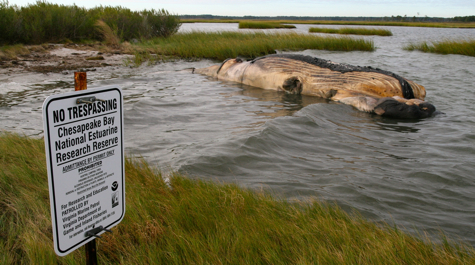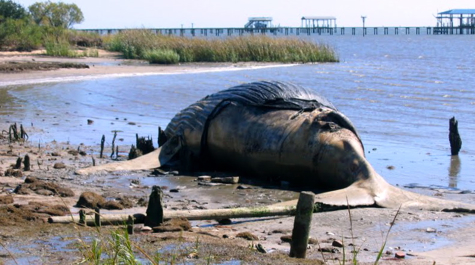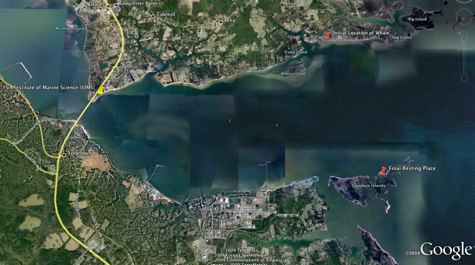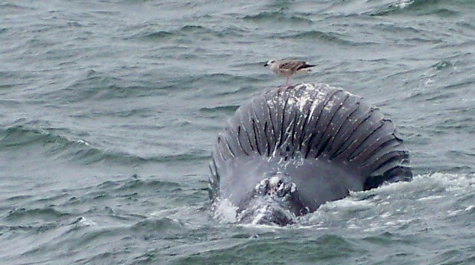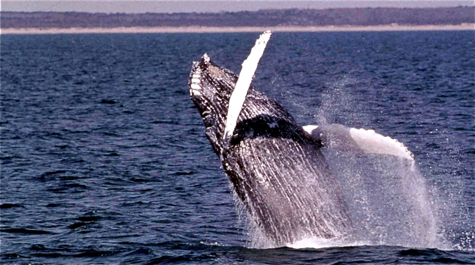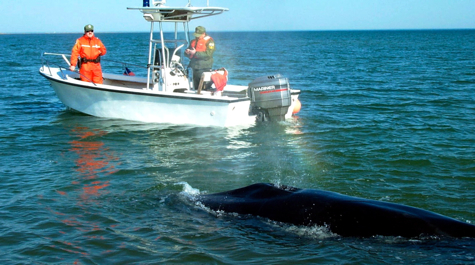Dead whale washes ashore
A dead female humpback whale has washed into the shallow waters of the Perrin River, a small tributary of Chesapeake Bay near Gloucester Point.
Decisions regarding the handling of the dead whale remain uncertain at this time. Press queries regarding the animal should be directed to Linda Candler with the Virginia Aquarium Stranding Program at 757-613-0416. The Virginia Institute of Marine Science does not operate a stranding program for marine mammals.
Professor Rom Lipcius, head of the VIMS Sea Turtle Stranding Program, notes that all marine mammals, live and dead, are protected under the federal Marine Mammal Protection Act. It is illegal to approach or touch a dead whale, and could be dangerous due to the possibility of contracting a disease.
The whale is thought to be a juvenile, with a length of about 25 feet, and a weight of between 10 and 15 tons. Adult humpbacks can grow to 60 feet in length, and weigh upwards of 40 tons.
The cause of death is unknown. The carcass was originally sighted near the middle of Chesapeake Bay at 37°16’ N, 76° 10.7’ W at around noon on Saturday. The degree of decomposition suggests the whale had died fairly recently, within a few days of sighting.
Dead whales that wash ashore on public shoreline are typically buried. Handling of this whale is complicated by the fact that it has not yet washed completely ashore, the prevalence of private shoreline in the area, and the difficulty of towing a 20-ton animal through very shallow water.
Humpback whales (Megaptera novaeangliae) have a worldwide distribution. The western Atlantic population migrates from summer feeding grounds off of New England and the Canadian Maritime Provinces to calving and breeding grounds in the West Indies. They feed on krill and schooling fish.
The species is characterized by its long pectoral flippers, which can reach a third of the body length. Individuals can be identified based on the pattern of markings on their tail flukes. Humpbacks take their name from the characteristic way they arch their back when they dive.
Humpback whales are not uncommon in Virginia’s coastal waters. A commercial whale-watching industry operates out of Virginia Beach each winter. The carcass of a 50-foot-long female humpback washed ashore on Assateague Island in March of 2009, and another large humpback stranded farther north in Maryland on the same day.


